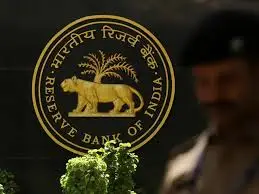Amid trade frictions and policy uncertainties, Indian economy has exhibited resilience: RBI article

In a world grappling with trade wars, policy uncertainties, and volatile geopolitical landscapes, India has emerged as a rare bright spot, showcasing resilience and economic stability. As highlighted in a recent article by the Reserve Bank of India (RBI), the Indian economy has managed to not only absorb external shocks but also continue its growth trajectory despite significant global headwinds.
Over the past few years, the global economic environment has been increasingly uncertain. Rising protectionist sentiments, disruptions in global supply chains due to the COVID-19 pandemic, the Russia-Ukraine conflict, and the tightening of monetary policies in developed economies have contributed to trade frictions and financial volatility. Despite these challenges, India’s macroeconomic fundamentals have remained largely intact, signaling a strong underlying growth momentum.
Strong Domestic Demand and Policy Support
One of the key drivers of India’s economic resilience has been robust domestic demand. The post-pandemic recovery saw a significant rebound in consumption, particularly in urban areas. Rural demand, although slightly uneven, has shown signs of recovery backed by good monsoons and government support programs. The services sector, particularly in IT, finance, and retail, has remained a crucial growth engine.
Additionally, proactive and calibrated fiscal and monetary responses have helped mitigate the impact of global shocks. The RBI has maintained a balanced approach, tightening rates to control inflation while ensuring adequate liquidity to support growth. The government, on its part, has pursued targeted capital expenditure, especially on infrastructure, while keeping fiscal consolidation on track.
The Union Budget in recent years has prioritized long-term growth through investments in roads, railways, and renewable energy. The Production-Linked Incentive (PLI) schemes have started bearing fruit by attracting foreign investments and encouraging domestic manufacturing in key sectors like electronics, pharmaceuticals, and automobiles.
Resilient Financial Sector and Foreign Investment Inflows
India’s banking and financial sector has also shown significant improvement in recent years. Non-performing assets (NPAs) have declined, capital adequacy ratios remain healthy, and credit growth has picked up across retail and industrial segments. This has been crucial in supporting economic activity and investor confidence.
Furthermore, despite volatility in global capital markets, India has continued to attract foreign direct investment (FDI), underlining long-term investor faith in the Indian growth story. While there have been occasional outflows from the equity and debt markets due to global risk-off sentiments, India’s strong macroeconomic fundamentals and market size continue to make it an attractive destination for investment.
External Sector Management and Forex Stability
Another pillar of India’s economic resilience has been its prudent management of the external sector. The current account deficit (CAD), though widened at times due to high oil imports and a strong dollar, has been kept under manageable limits. The RBI has actively intervened in the forex markets to smooth volatility, ensuring a relatively stable rupee despite external shocks.
India’s foreign exchange reserves, though slightly drawn down from their peak, continue to provide a comfortable cushion against external shocks. As of early 2025, reserves remain over $600 billion, enough to cover several months of imports and support currency stability.
Digital Economy and Structural Reforms
India’s resilience also stems from its ongoing structural transformation, especially the rise of the digital economy. Initiatives like the Unified Payments Interface (UPI), Aadhaar-enabled services, and digital banking have improved efficiency, transparency, and financial inclusion. These advancements have also boosted productivity and reduced transaction costs, enabling businesses and consumers to adapt better to changing economic conditions.
In addition, reforms in taxation (such as GST), labor laws, and insolvency resolution have helped in improving India’s ease of doing business. These long-term structural reforms are critical in enhancing competitiveness and preparing the economy for future shocks.
Challenges Ahead: Navigating Uncertainties
While the overall picture is positive, the RBI article rightly cautions that risks remain. Global inflationary pressures, rising interest rates in the US and Europe, and persistent geopolitical tensions can affect trade and capital flows. Any sharp slowdown in global growth, particularly in major economies like the US or China, could impact India’s exports and investment sentiment.
Domestically, challenges such as income inequality, rural distress, and unemployment need sustained policy attention. Moreover, the impact of climate change and the energy transition will require careful planning to ensure long-term sustainable development.
Conclusion
India’s economic journey in recent years presents a compelling case of resilience in the face of adversity. Guided by prudent policies, a strong domestic base, and structural reforms, the Indian economy has not only weathered global uncertainties but emerged stronger. As the RBI article emphasizes, continued vigilance, policy agility, and a focus on inclusive growth will be key to sustaining this momentum.
In a world marked by volatility and unpredictability, India’s performance stands out as a testament to its growing economic maturity and potential. While challenges persist, the country’s ability to adapt and move forward offers a strong foundation for long-term prosperity.






